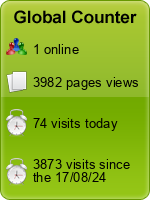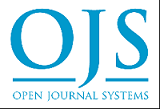Efektivitas stimulasi fisik terhadap reflek hisap neonatal hyperbilirubinemia di bawah fototerapi: A literature review
DOI:
https://doi.org/10.33024/hjk.v18i6.554Keywords:
Hiperbilirubinemia Neonatal, Stimulasi Fisik, Refleks HisapAbstract
Background: Hyperbilirubinemia is the level of bilirubin in the blood and body tissues of infants that exceeds the normal limit. This condition is not dangerous, but prevention, detection and management of hyperbilirubinemia in newborns remains a priority to reduce the neurotoxic effects of bilirubin, both short and long term including the possibility of severe hyperbilirubinemia. To determine the fulfillment of fluid needs in neonates, hyperbilirubinemia is related to the sucking reflex in the neonate itself.
Purpose: To determine the effectiveness of physical stimulation on the sucking reflex in neonates with hypobilirubinemia undergoing phototherapy.
Method: Literature review research sourced from national and international journals with a search strategy using the Google Scholar, BMC, Sage Journal, and ScienceDirect databases published in the last 10 years.
Results: Non-invasive physical therapy stimulation has many benefits and does not require special equipment in its implementation. This stimulation is effective in increasing the sucking reflex in hyperbilirubinous neonates undergoing phototherapy which is characterized by a decrease in bilirubin levels.
Conclusion: Physical stimulation can increase the sucking reflex in hyperbilirubinous neonates undergoing phototherapy.
Keywords: Hyperbilirubinemia Neonatal; Physical Stimulation; Sucking Reflex.
Pendahuluan: Hiperbilirubinemia merupakan kadar bilirubin dalam darah dan jaringan tubuh bayi yang melebihi batas normal. Kondisi ini tidak berbahaya, namun upaya pencegahan dan deteksi serta penatalaksanaan hiperbilirubinemia pada bayi baru lahir tetap menjadi prioritas untuk mengurangi efek neurotoksik bilirubin, baik jangka pendek maupun jangka panjang termasuk kemungkinan hiperbilirubinemia berat. Memastikan terpenuhinya kebutuhan cairan pada neonatus, hiperbilirubinemia berkaitan dengan refleks hisap pada neonatus itu sendiri.
Tujuan: Untuk mengetahui efektivitas stimulasi fisik terhadap refleks menghisap pada neonatus dengan hipobilirubinemia yang menjalani fototerapi.
Metode: Penelitian tinjauan literatur yang bersumber pada jurnal nasional maupun internasional dengan strategi pencarian menggunakan database Google scholar, BMC, Sage Journal, dan ScienceDirect terbitan 10 tahun terakhir.
Hasil: Stimulasi fisik terapi non-invasif memiliki banyak manfaat dan tidak memerlukan peralatan khusus dalam pelaksanaannya. Stimulasi tersebut efektif meningkatkan refleks menghisap pada neonatus hiperbilirubinosa yang menjalani fototerapi yang ditandai dengan penurunan kadar bilirubin.
Simpulan: Stimulasi fisik dapat meningkatkan refleks menghisap pada neonatus hiperbilirubinosa yang menjalani fototerapi.
Kata Kunci: Hiperbilirubinemia Neonatal; Stimulasi Fisik; Refleks Hisap.
References
Abbas, S. K., Hussein, H. M., Whhab, M. A. A. A., & Alashab, S. K. (2022). The Role of Phototherapy as a Treatment of Full-Term Newborn with Neonatal Hyperbilirubinemia with Different Types of Infant Feeding. Iraqi Medical Journal, 68(1), 7-14.
Anggraini, R. D., & Sari, W. A. (2020). Pengaruh pijat bayi terhadap kualitas tidur bayi usia 0-6 bulan. JPK: Jurnal Penelitian Kesehatan, 10(1), 25-32.
Apriyani, S., Mariyam, M., Alfiyanti, D., & Samiasih, A. (2021). Field Massage Improves The Life Quality Of Infant With Hyperbilirubinemia And Under Phototherapy. Media Keperawatan Indonesia, 4(2), 108.
Apsari, P. I. B., Supadma, I. N., & Winianti, N. W. (2023). Persalinan Sectio Caesarean dan Pemberian Air Susu Ibu Sebagai Faktor Risiko Hiperbilirubinemia Neonatorum. Sari Pediatri, 25(3), 185-189.
Arafa, N.M., Radwan, R.I.M., & Mohammed, A. A. E. A. (2021). Effect of olfactory and gustatory stimulations on preterm neonates’ feeding progression and sniffing away feeding tube. Egyptian Journal of Health Care, 12(4), 1681-1699.
Asaye, S., Bekele, M., Getachew, A., Fufa, D., Adugna, T., & Tadese, E. (2022). Hyperbilirubinemia and associated factors among neonates admitted to neonatal care unit in Jimma Medical Center.
Berthelsen, J. (2022). Promoting pre-feeding skills: development and implementation of an oral motor protocol and clinical guidelines in a level IV NICU.
Bhutani, V. K., & Johnson, L. (2008). The jaundiced newborn in the emergency department: Prevention of kernicterus. Clinical Pediatric Emergency Medicine, 9(3), 149-159.
Brits, H., Adendorff, J., Huisamen, D., Beukes, D., Botha, K., Herbst, H., & Joubert, G. (2018). The prevalence of neonatal jaundice and risk factors in healthy term neonates at National District Hospital in Bloemfontein. African Journal of Primary Health Care and Family Medicine, 10(1), 1-6.
Fatmawati, N., Zulfiana, Y., & Pratiwi, Y. S. (2021). The effect of baby massage on improvement baby weight. Journal for Quality in Public Health, 4(2), 227-232.
Fauzia, R. L., Budihastuti, U. R., & Adriani, R. B. (2022). Meta-analysis the effect of baby massage in increasing quality of sleep and infant body weight. Journal of Maternal and Child Health, 7(1), 64-74.
Gourley, G. R., Kreamer, B., & Arend, R. (1992). The effect of diet on feces and jaundice during the first 3 weeks of life. Gastroenterology, 103(2), 660-667.
Hassan, B., & Zakerihamidi, M. (2018). The correlation between frequency and duration of breastfeeding and the severity of neonatal hyperbilirubinemia. The Journal of Maternal-Fetal & Neonatal Medicine, 31(4), 457-463.
Ismaili, D., & Azizi, K. (2020). Nursing care for the newborn and the mother after childbirth-Postpartum phase, home care.
Kaplan, M., Bromiker, R., & Hammerman, C. (2011). Severe neonatal hyperbilirubinemia and kernicterus: are these still problems in the third millennium?. Neonatology, 100(4), 354-362.
Karimzadeh, P., Fallahi, M., Kazemian, M., Taleghani, N. T., Nouripour, S., & Radfar, M. (2020). Bilirubin induced encephalopathy. Iranian journal of child neurology, 14(1), 7.
Kementerian Kesehatan Republik Indonesia. (2019). Tatalaksana hiperbilirubinemia. Diakses dari: https://kemkes.go.id/id/pnpk-2019---tata-laksana-hiperbilirubinemia
Kemper, A. R., Newman, T. B., Slaughter, J. L., Maisels, M. J., Watchko, J. F., Downs, S. M.,& Russell, T. L. (2022). Clinical practice guideline revision: management of hyperbilirubinemia in the newborn infant 35 or more weeks of gestation. Pediatrics, 150(3).
Kenari, R.L., Aziznejadroshan, P., Mojaveri, M. H., & Hajian-Tilaki, K. (2020). Comparing the effect of kangaroo mother care and field massage on serum bilirubin level of term neonates with hyperbilirubinemia under phototherapy in the neonatal ward. Caspian journal of internal medicine, 11(1), 34.
Khudhur, K. Y. (2021). The Efficacy of Phototherapy in the Treatment of Neonatal Jaundice. Indian Journal of Forensic Medicine & Toxicology, 15(3).
Lau, C. (2015). Development of suck and swallow mechanisms in infants. Annals of Nutrition and Metabolism, 66(Suppl. 5), 7-14.
Mohammed, A. A. E. R. A., Elsharkawy, A., & Radwan, R. I. M. (2023). Effect of Facilitated Tucking and Gustatory Stimulation on Preterm Neonates’ Physical Growth and Behavioral Regulation. Menoufia Nursing Journal, 8(1), 13-30.
Mrljak, R., Arnsteg Danielsson, A., Hedov, G., & Garmy, P. (2022). Effects of infant massage: a systematic review. International journal of environmental research and public health, 19(11), 6378.
Rohsiswatmo, R., & Amandito, R. (2018). Hiperbilirubinemia pada neonatus> 35 minggu di Indonesia; pemeriksaan dan tatalaksana terkini. Sari Pediatri, 20(2), 115-122.
Sadek, B. N., & Abdelhamed, T. H. (2020). Effect of Sensory Stimulation Interventions on Physiological Stability and Neurobehavioral Outcomes of Premature Neonates. Journal of Nursing and Health Science, 9(4), 48-61.
Shandley, S., Capilouto, G., Tamilia, E., Riley, D. M., Johnson, Y. R., & Papadelis, C. (2021). Abnormal nutritive sucking as an indicator of neonatal brain injury. Frontiers in Pediatrics, 8, 599633.
Wang, J., Guo, G., Li, A., Cai, W. Q., & Wang, X. (2021). Challenges of phototherapy for neonatal hyperbilirubinemia. Experimental and therapeutic medicine, 21(3), 1-1.
Yazdiha, M. S., Naghibzadeh, M., Ghorbani, R., Emadi, A., Hoseinzadeh, B., & Gohari, A. (2018). The Relationship between Types of Delivery and Methods of Anesthesia with Occurrence of Jaundice in Term Neonates. International Journal of Pediatrics, 6(7), 7959-7964.
Yoanita, R., Gunardi, H., Rohsiswatmo, R., & Setyanto, D. B. (2021). Effect of tactile–kinesthetic stimulation on growth, neurobehavior and development among preterm neonates. Journal of Bodywork and Movement Therapies, 28, 180-186.









